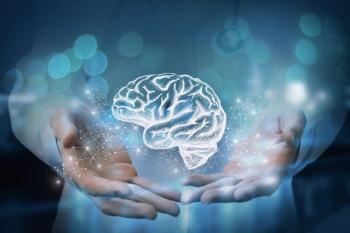
Study Shines a Light on Depression
Researchers conducted a clinical trial comparing light therapy with antidepressant monotherapy. Here's what they found.
RESEARCH
Light therapy may be an effective treatment for major depressive disorder (MDD), says a multicenter team of researchers.
The trial lasted 8 weeks and included 122 psychiatric outpatients, aged 19 to 60 years, who had a diagnosis of MDD of at least moderate severity as assessed by board-certified psychiatrists and confirmed via the Mini International Neuropsychiatric Interview and the Hamilton Depression Rating Scale. Of this total intent-to-treat population, 32 patients were allocated to receive light monotherapy, 31 to fluoxetine monotherapy, 29 to combination therapy, and 30 to placebo.
Light monotherapy consisted of exposure to an active 10,000lux fluorescent white light box for 30 minutes every morning plus ingestion of a placebo pill. Fluoxetine monotherapy included use of an inactive ion generator, which served as a sham light box. Patients allocated to combination therapy received both fluoxetine 20 mg/d and active light therapy, and those allocated to placebo only received a placebo pill and underwent exposure to the inactive ion generator.
Patients were regularly evaluated using the Montgomery-Ã sberg Depression Rating Scale (MADRS), Clinical Global Impression subscales for depression severity and improvement, and the Quick Inventory of Depressive Symptomatology-Self report. Adverse events also were monitored.
More effective than fluoxetine alone
Light therapy, either as monotherapy or in combination with fluoxetine, was effective and well tolerated. Indeed, although combination therapy provided the most consistent effects, fluoxetine monotherapy was no more effective than placebo-although the researchers noted that the seemingly poor performance of fluoxetine monotherapy may have been a consequence of a smaller-than-planned sample size.
The mean change in MADRS score from baseline at 8 weeks was 16.9 (±9.2) in patients who received combination therapy, 13.4 (±7.5) in those who received light monotherapy, 8.8 (±9.9) in those who received fluoxetine monotherapy, and 6.5 (±9.6) in those who received placebo.
Response, defined as a 50% or more reduction from baseline in MADRS scores, was achieved by 76% of the group receiving combination therapy; 50% of the group receiving light monotherapy; 29% of those receiving fluoxetine monotherapy; and 30% of those receiving placebo. Remission, defined as a MADRS score of 10 or lower at the final visit, was achieved by 59% of the combination-therapy group, 44% of the light-monotherapy group, 19% of the fluoxetine-monotherapy group, and 30% of the placebo group. No significant differences in terms of adverse events were seen.
Mechanism of action to be determined
How light therapy ameliorates SAD-or depressive symptoms in general-is unknown, but the leading hypothesis has been that bright light may resynchronize circadian rhythms or restore neurotransmitter dysfunction. A
References:
1. Lam RW, Levitt AJ, Levitan RD, et al. Efficacy of bright light treatment, fluoxetine, and the combination in patients with nonseasonal major depressive disorder: a randomized clinical trial. JAMA Psychiatry. 2015 Nov 18:19. [Epub ahead of print].
2. Neumeister A. Tryptophan depletion, serotonin, and depression: where do we stand?
Psychopharmacol Bull. 2003;37:99-115.
Newsletter
Receive trusted psychiatric news, expert analysis, and clinical insights — subscribe today to support your practice and your patients.




